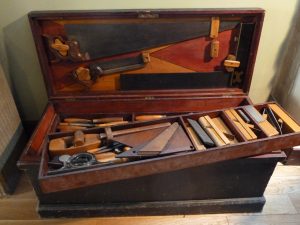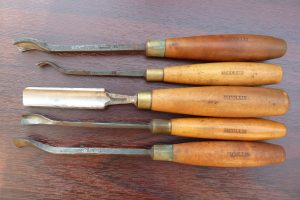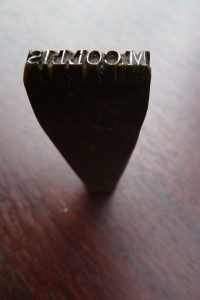It’s rather battered – cracked down the middle, with cut corners and the left edge peeled off in a zig-zag flash – but this group portrait is among my most treasured family photos. It depicts several siblings from the Shipley family and their partners, taken in a back yard in 1890s Leicester.
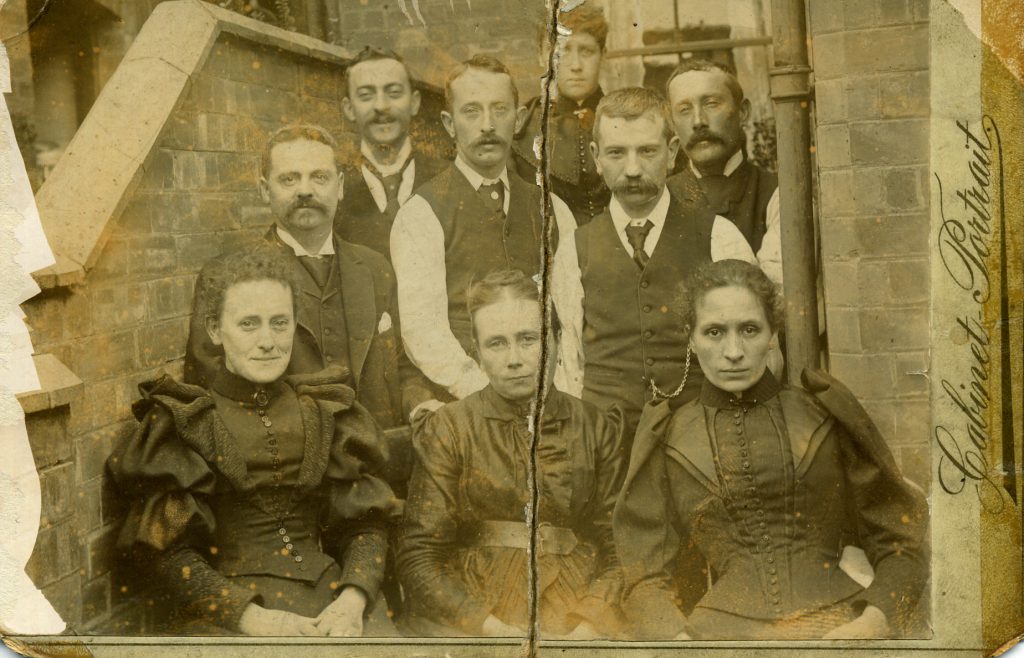
All nine faces stare at the photographer’s camera; most of them look rather serious, one or two break out into a smile. I hop from one to the other, studying their faces and clothing. Was Uncle Fred as fearsome as he looked? Or Uncle Bill the joker of the pack? Had Uncle Harry’s new wife Sarah Bailey settled happily into the family? And how did Aunt Sarah manage to pinch her waist so tightly?
I was given this photo in March 1984 by Rosie Flude (nee Orchard), a distant cousin who wished me “best of luck in your hunt for the family tree”. Having discovered my enthusiasm for family history as a teenager, I was fortunate to meet Rosie and her sister Grace Cooke – then aged 78 and 89 respectively – in Grace’s terraced house in Aylestone, on the fringes of Leicester. We were generations apart, but over a cuppa one evening we shared stories and snippets about our Shipley forebears.
Why was this particular photo taken, I wonder? Rosie and Grace could only name a few of the faces in the group – including their parents, Sarah and Jack – but, with a bit of sleuthing, I think I’ve identified everyone. There are four siblings with their spouses – Frederick and Catherine ‘Kate’ Shipley, Sarah and John Charles ‘Jack’ Orchard, Harry and Sarah Shipley, and William Charles and Alice Elizabeth Shipley – together with their brother-in-law Albert Alletson Oldham.
The fact that Albert’s wife Ann Oldham is missing provides me with a vital clue; was this photo taken shortly after Ann’s funeral in June 1893, I speculate? Black dresses and black ties hint at a family in mourning. Comparisons with a couple of other family photos place this one in the early 1890s. And it looks like it might have been a June afternoon, warm enough for three of the men to remove their jackets outdoors.
I haven’t quite managed to pin down the back yard location but it’s most likely to be 6 Arnold Street, where the Orchards lived (and hence why they had the original photograph). That house has long been demolished but the configuration on old Ordnance Survey maps appears to align with the photo.
Having laid Ann Oldham to rest at Welford Road Cemetery, perhaps they’d come back to reminisce over a cup of tea? It seems curious to invite a photographer round to capture that particular moment – so maybe it was a week or two later – but I’m just so grateful that they recorded it for posterity. Even the neighbour was intrigued, sneaking a peek over the yard wall.
Alas, three of the Shipley siblings are absent from the photo, including Elizabeth Collis (my great great grandmother) who had been close to her late sister Ann Oldham. Their parents, William John and Ann Shipley, were still alive at this date but apparently not included in the gathering either. Nevertheless, it provides a fascinating glimpse of a significant family get together.
Archivists would be dismayed by the photograph’s condition. With its dog-earned corners and fault-line crack it has certainly seen better days. But let’s imagine it back in 1893, pristine and propped on Sarah Orchard’s parlour mantlepiece. Each time she wanders past, she can’t help but smile. Four generations on, and 130 years later, I too am captivating by it; as I wander around the group, from face to face, I feel a special connection with my Victorian family.
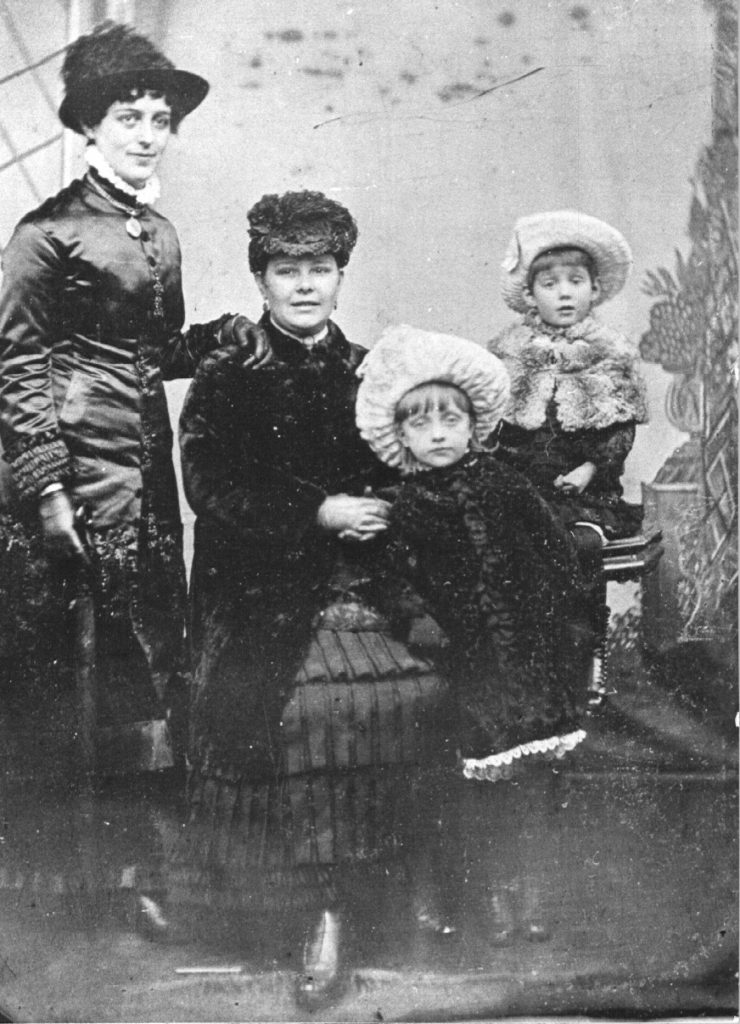
Ann Oldham (seated) and her sister Elizabeth Collis with their children in earlier times (c 1881)
